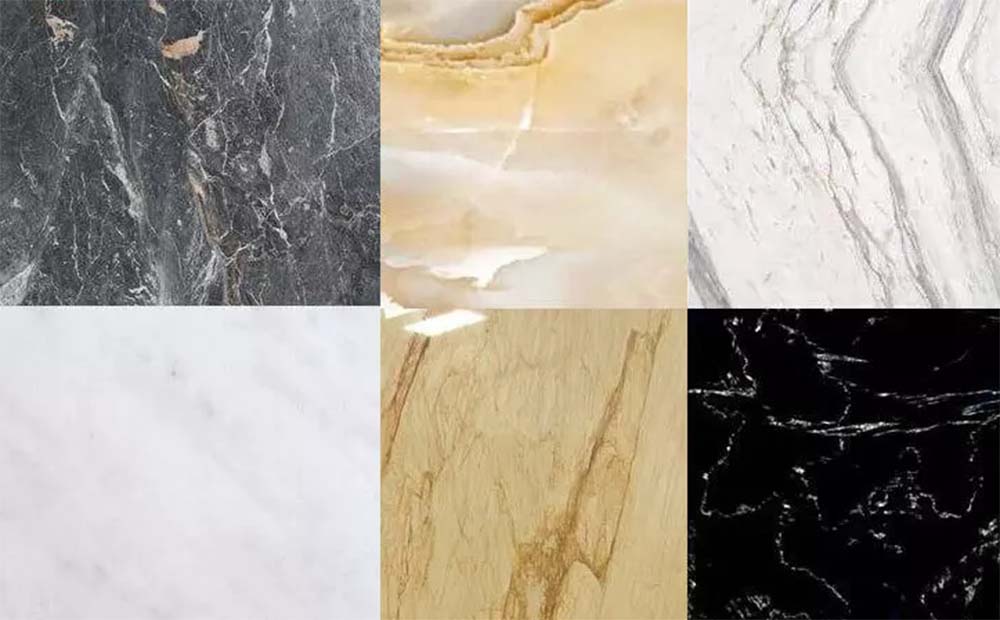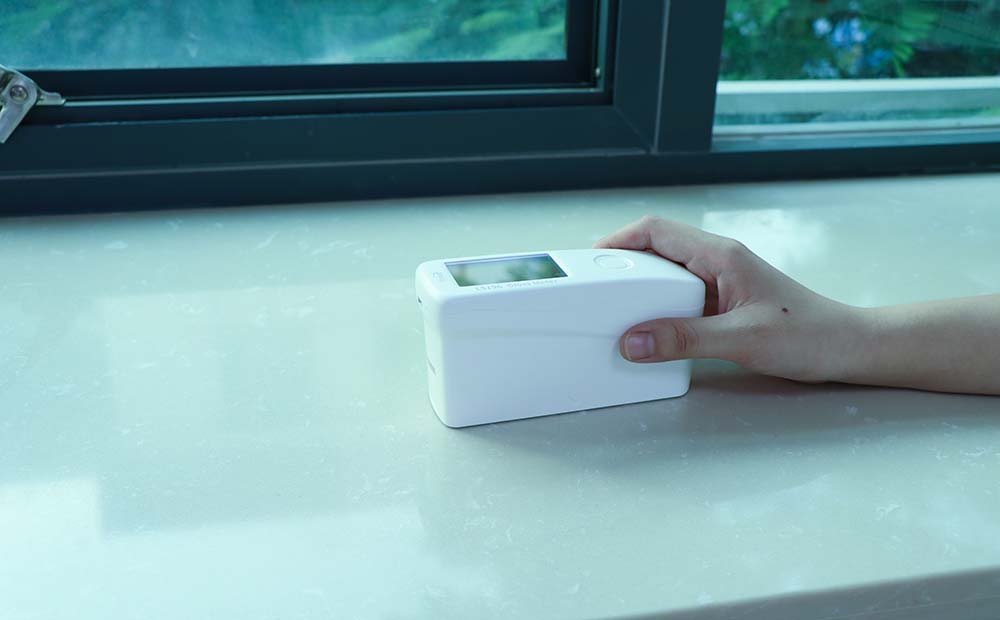Application of high-gloss gloss meter in marble care
Marble is a common stone in our life. Its surface is very smooth and beautiful. However, these characteristics are not inherent in itself, and need to be processed through many processes. Among them, the glossiness is the factor that everyone pays more attention to in the stone care project. Many people even use it as a measure of the quality of the project. They think that the higher the glossiness, the better the project is. In fact, the level of gloss is only one of the many factors that determine the decorative effect of stone, so let's take a look at the application of high-gloss gloss meter in marble care.

Marble care
In terms of marble care, two methods are generally used, waxing and recrystallization.
Waxing is an effective way to polish the marble surface and maintain its gloss, but there are many disadvantages in the maintenance of this marble. One is that the wax surface absorbs dust, and the treated ground tends to have a gray feeling, and pedestrians will leave clear footprints behind; the other is that the wax layer seals the pores of the marble, and the moisture inside the marble cannot leak out, resulting in The marble is deformed; third, the wax layer is soft and easy to be worn, and cannot really meet the requirements for maintaining marble.
Recrystallization is currently a popular maintenance method for marble. Recrystallization is divided into two parts, one is the mechanical tool part, and the other is the special chemical material part. In the marble recrystallization, the chemical material part is to use some special chemical materials to react with the structure of the marble surface with the help of the heat generated by mechanical friction, to produce a new hard crystal layer, so as to maintain the effect of gloss.
Marble Gloss Requirements
The surface gloss of marble slabs will greatly affect the decorative effect. Generally speaking, the polished surface of high-quality marble slabs should have a mirror-like luster, which can clearly reflect the scenery.
Different surface effects have different requirements for gloss. The gloss of marble is about 80GU after polishing, and the gloss is generally between 85GU-100GU after surface crystallization and maintenance. However, the gloss of stone is affected by various factors such as the chemical composition of the stone, natural weathering, tissue structure, texture, hardness, particle size, and artificial measurement techniques. Long-term maintenance of gloss requires professional maintenance. Generally, the methods for evaluating the glossiness of marble include visual inspection and instrumental measurement.
The visual method is to observe the surface gloss directly through the human eye through a specific angle under a stable light source environment. This method can compare the gloss difference, but there is no way to obtain a specific gloss value and grade judgment. The instrument measurement method is to use a gloss meter to measure. We can use a high-gloss gloss meter to measure the gloss of the marble surface.
How to use the high-gloss gloss meter
Before using the high-gloss gloss meter, you need to pay attention to the operating environment requirements of the gloss meter, and avoid using and storing it in a humid, strong electromagnetic interference, strong light, and dusty environment. When using the standard version, avoid bumping it with sharp objects, avoid staining and staining, and avoid exposing the standard version to strong light.
The LS196 high-gloss gloss meter can accurately measure the high-gloss of the marble surface. Let's use it to demonstrate:
1. Switch on
LS196 high-gloss gloss meter has simple buttons, and the measurement button is the same as the switch button. Short press to turn on the instrument. If the instrument is not in use, long press the measurement button to turn it off. The instrument will automatically turn off if there is no operation for a long time.
2. Calibration
After starting up, there will be a calibration prompt before entering the measurement page. The instrument has an automatic compensation function for ambient temperature, and the value is relatively stable, so frequent calibration is not required. However, if the instrument has not been used for a long time and the temperature difference between before and after use is large, it is recommended to perform calibration before starting the measurement.

3. Measurement mode
LS196 is easy to operate and intelligent, and can detect the data of marble slabs with one-click measurement. There are common measurement mode and QC measurement mode, which can meet various measurement needs.
4. Start measuring
The gloss meter measures the surface gloss of the marble slab. In order to better express the average gloss of the surface of the object, take point measurements on the surface of the measurement sample, usually measure multiple times, and take the average value. In the normal mode, the data can be obtained immediately after measurement, and in the QC mode, the qualified rate of materials can be tested in batches.
Gloss is one of the considerations of high-quality marble slabs after polishing. To maintain their gloss, care projects are required, and a high-gloss gloss meter is an integral part of it.
- Glossiness Measurement Device for Glass
- Heavy Anticorrosive Coatings Application
- Window Tint Checker | Which Transparent Sound Barriers Performs Better?
- Precautions and Application Magnetic Coating Thickness Gauge
- Application of Paint Thickness Meters in Fireproof Coating Industry
- Test Glassine Transmittance by Diffuse Transmission Material Transmittance Meter